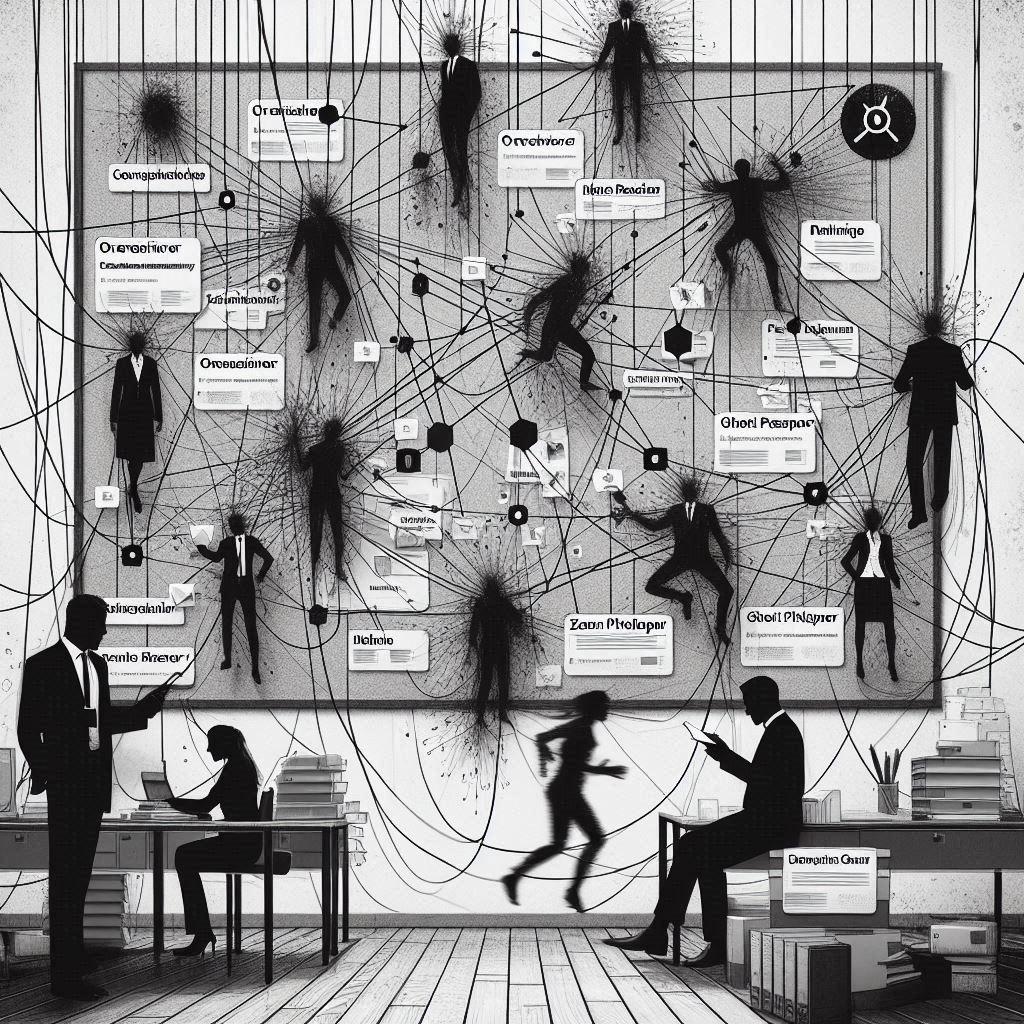“Some coworkers are team players. Some are spreadsheet vigilantes. And some? Some are outliers.”
The Setup: You, a Slack Thread, and Chaos
Let’s say you’ve just joined a new org. You open Slack. You see 58 unread messages in the #general channel. Someone has posted a passive-aggressive comment about snack etiquette. A different thread has devolved into a debate about YAML vs JSON. You don’t know anyone’s title, or if “J-Dawg” is your boss or the intern.
How do you make sense of this?
Welcome to unsupervised learning — where no one labels the data and you’re just here to find clusters before the building catches fire.
What Is Unsupervised Learning (And Why It Feels Like Corporate Life)
Unlike supervised learning, where you’re handed a tidy dataset with inputs and known outputs (e.g., email labeled “angry”), unsupervised learning hands you raw chaos and says:
“Good luck. Try to group similar things together. Or don’t. Whatever.”
Algorithms like k-means clustering, DBSCAN, or hierarchical clustering can help find hidden patterns. So can human intuition — but it’s less GPU-efficient.
Case Study: Cluster Your Coworkers
Let’s imagine you’ve got employee data:
- Slack messages
- Meeting behavior
- Reaction emoji frequency
- Number of Notion boards created (red flag)
Run k-means. You get 5 clusters:
Cluster 0: The Overfunctioners
- Send Google Docs at 11:59 PM
- Use bullet points with sub-sub-sub bullets
- End sentences with “.”
Cluster 1: The Ghosts
- Cameras off
- Mic muted
- Possibly not real?
Cluster 2: The Ritualists
- Open standup with “hey hey!”
- Have strong feelings about calendar color codes
- Probably meditate before retros
Cluster 3: The Chaos Mavens
- Suggest switching to a new task tracking tool weekly
- Use GIFs exclusively for communication
- Set Slack status to “feral”
Cluster 4: The Sentient PDF
- Speaks in policy
- Knows where the SharePoint lives
- Has legally outlived three reorganizations
Dimensionality Reduction: Because Not Every Trait Matters
Not everything matters equally: whether someone likes Java or JavaScript is not as telling as how many Notion tables they’ve created for their fantasy football league.
Use PCA (Principal Component Analysis) or t-SNE to reduce your social data into just a few meaningful axes:
- Productivity vs Noise Ratio
- Sentiment Volatility
- Number of Unread Emails Tolerated
Then chart the org. You’ll find your people. Or at least, the ones least likely to file an HR ticket after your fourth sarcasm.
Anomaly Detection: Because Someone’s Always Printing from Excel
Once you’ve clustered the normies, what about the anomalies?
- The person who uses Bing on purpose
- The one who opens
.csvfiles in Photoshop - The contractor who never speaks but delivers full feature sets overnight
That’s unsupervised anomaly detection — and possibly a rogue AI.
The Takeaway
You don’t need labeled data to know that Tim from Procurement is an edge case.
Unsupervised learning isn’t about certainty — it’s about structure. About carving some interpretive meaning from a digital soup of behavior, emoji, and chaos.
In the absence of labels, trust the patterns. Trust the math. And maybe trust your gut — unless your gut is also Cluster 3.
Further Reading
- Unsupervised learning in scikit-learn – Official documentation with examples.
- Clustering comparison – Includes
k-means,DBSCAN, andAgglomerative Clustering. - t-SNE for Visualization – Dimensionality reduction in high-dimensional data.
- Detecting Outliers with Isolation Forest
- Principal Component Analysis (PCA) – Make high-dimensional Slack energy slightly more digestible.

Leave a Reply